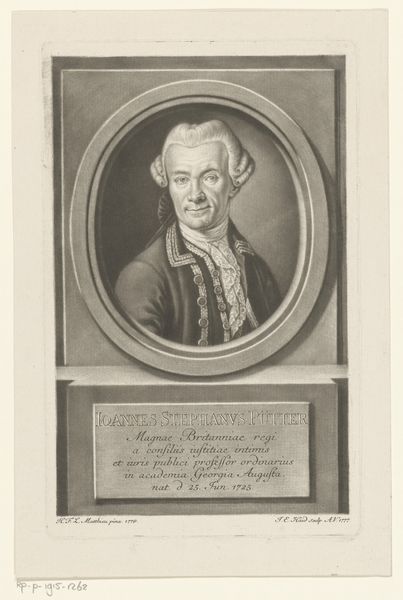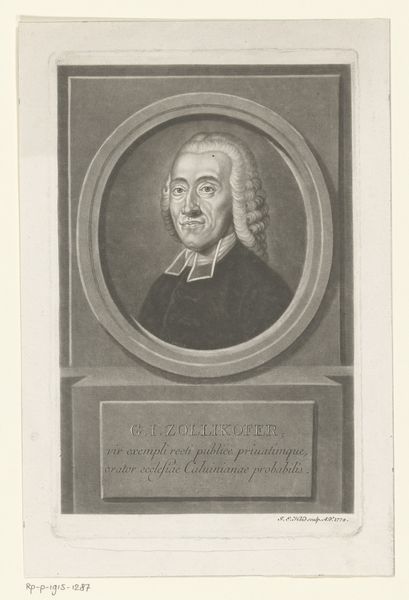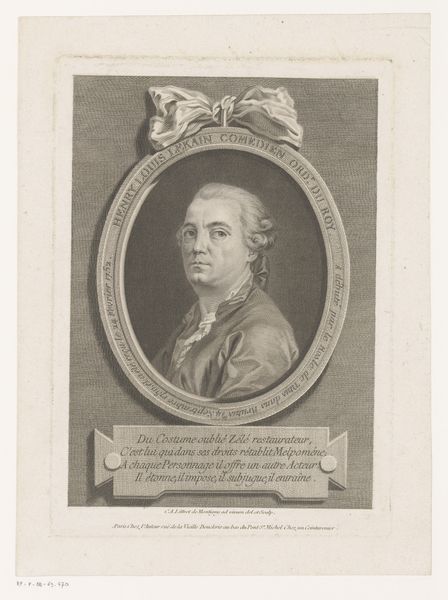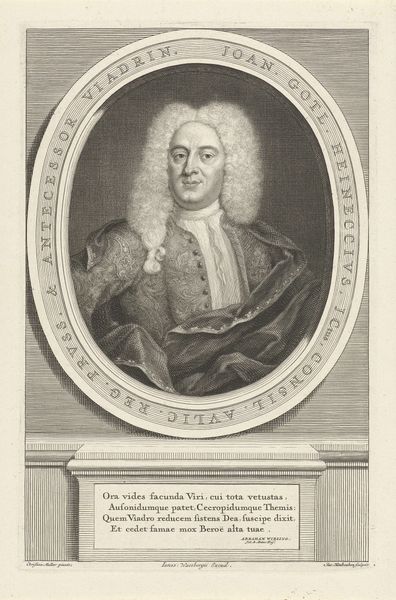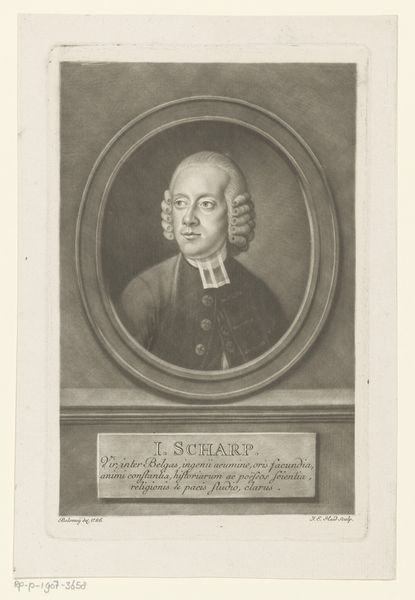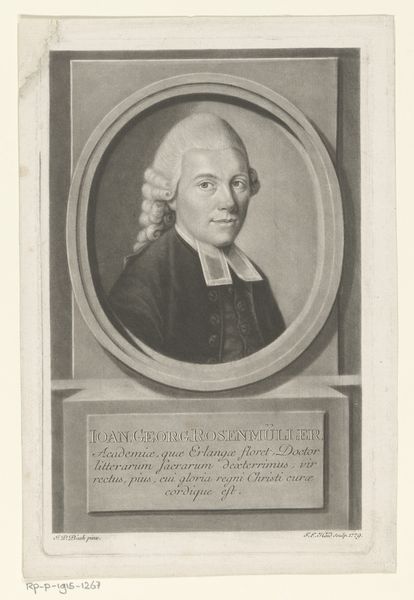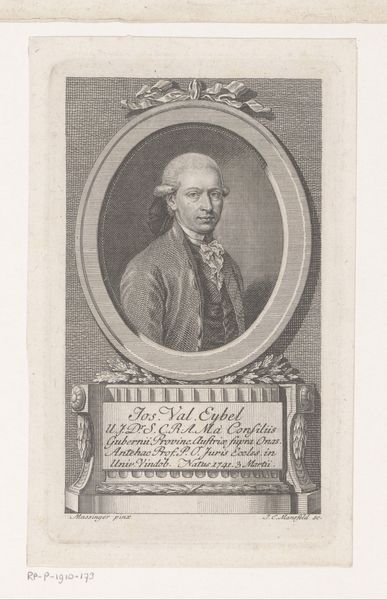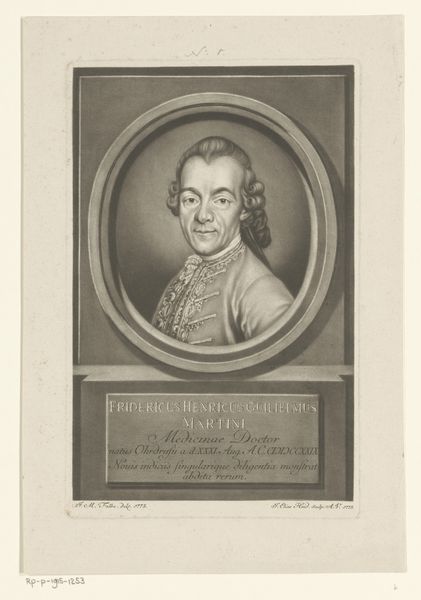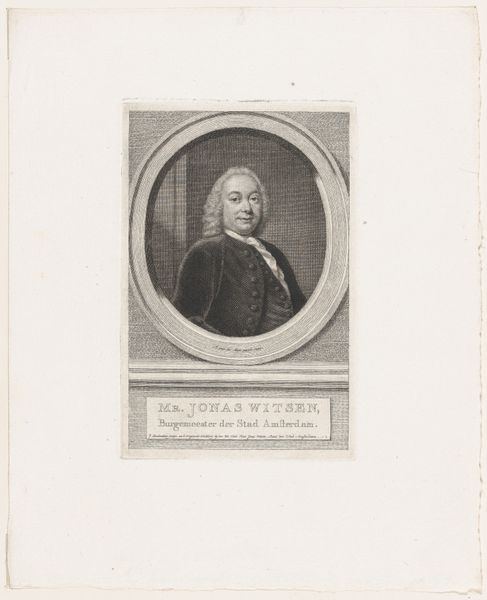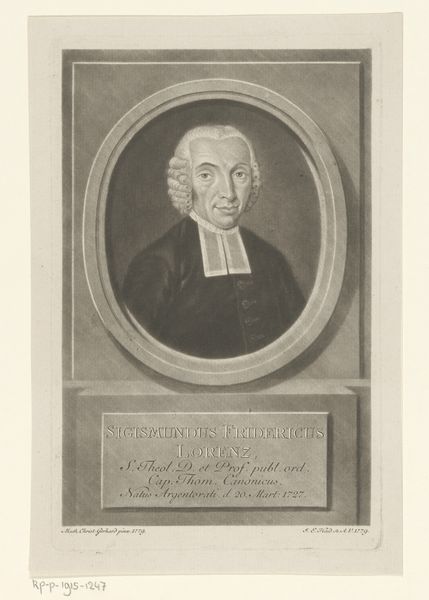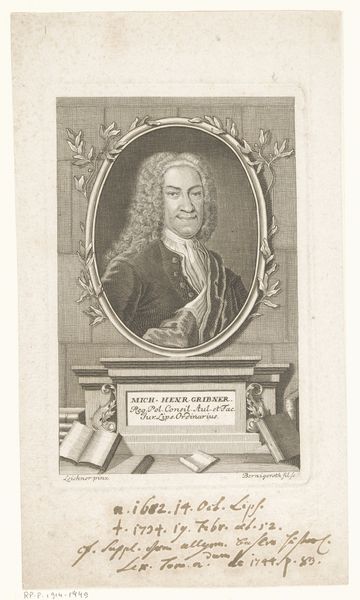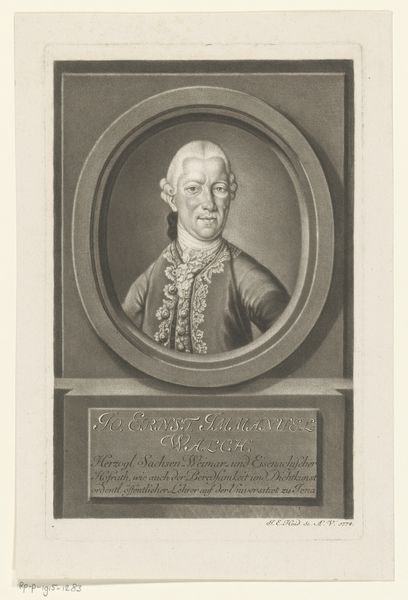
Dimensions: height 220 mm, width 140 mm
Copyright: Rijks Museum: Open Domain
This print, portraying Johann Beckmann, was made by Johann Elias Haid. It is an aquatint, a printmaking technique that simulates the appearance of watercolor washes. The process involves etching tones onto a copper plate using acid, creating a textured surface that holds ink. This intaglio process allows for subtle gradations of light and shadow, seen here in the soft rendering of Beckmann's face and clothing. Aquatint emerged alongside the rise of industrialization, and the printmaking process mirrors the division of labor, with skilled artisans needed to prepare the plates, apply the acid, and operate the printing press. Considered in its social context, this portrait speaks to the growing importance of individual achievement and the rise of the professional class during the Enlightenment. The print medium allowed for wider dissemination of images, contributing to the cult of celebrity and the commodification of knowledge. By examining the materials and making of this print, we gain insight into the cultural values and economic forces that shaped its creation. This challenges the traditional hierarchy between fine art and craft, revealing the complex interplay of artistic skill, technological innovation, and social context.
Comments
No comments
Be the first to comment and join the conversation on the ultimate creative platform.
